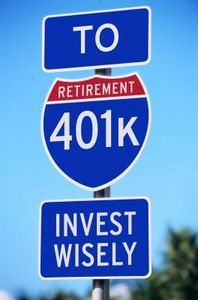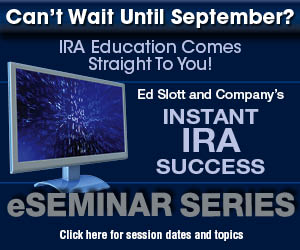In many of our writings we refer to the most popular types of qualified retirement plans, such as 403(b)s and 401(k)s. While these are two very distinct plans with many differing rules, they do share several commonalities. In particular, the main purpose of each is to provide participants with an easy venue for saving and investing for retirement on a tax-beneficial basis. Both have taken a more prominent role as employers continue to jettison traditional pension plans.
 401(k) plans are established generally for the benefit of private sector workers. 403(b) plans are primarily for employees of non-profit organizations, certain educational and medical institutions and associations, and some religious ministries. You may recognize the name “TIAA-CREF” as one of the more prevalent providers of 403(b) plans primarily for teachers and professors.
401(k) plans are established generally for the benefit of private sector workers. 403(b) plans are primarily for employees of non-profit organizations, certain educational and medical institutions and associations, and some religious ministries. You may recognize the name “TIAA-CREF” as one of the more prevalent providers of 403(b) plans primarily for teachers and professors.
Originally, the main funding source for both types of plans was employee pre-tax contributions, which were invested and grew tax-free until withdrawn. Now, with the advent of the Roth IRA feature, many plans give you the choice of making either pre-tax or Roth (post-tax) contributions or a combination of both, up to the annual deferral limit. The growth on both types of contributions is not taxed as it occurs, but in the Roth account the contributions and growth will be tax-free when distributed, provided certain conditions are satisfied.
Employers often match employee contributions to some degree or make non-matching contributions. If your employer does so, you want to be sure to take advantage of the match as this is basically free money being provided by your employer. Employer contributions to a 401(k) can have vesting periods of up to several years, while 403(b) plans typically feature immediate or quicker vesting. In both cases, however, employee contributions are fully vested immediately.
Both plans, if available to you, are a great way to provide for a financially successful retirement. The contribution limits for these plans are substantially higher than those for IRAs, and any employer contributions “are icing on the cake.” If you have access to these types of plans, as well as an IRA, and you can afford to contribute to all of them, you will no doubt reap the rewards of having saved and invested diligently for retirement when that day finally arrives.
-By Marvin Rotenberg and Jared Trexler
Are 401(k)s and 403(b)s Different?
Mailbag
Thursday's Slott Report Mailbag

Consumers: Send in Your Questions to [email protected]
Q:
I transferred a stock from my IRA to my regular (non IRA account) and then transferred the exact same number of shares of the same stock back into my IRA within 60 days. However, the value of those shares was $10,000 higher.
Do I have a problem because I put more money into the IRA even though I transferred the same number of shares?
Thanks
Mark
A:
There is no problem. Your distribution of property (shares of stock) from your IRA qualifies to be rolled over tax-free within 60 days only if the identical stock is rolled over to a receiving IRA. It is common for the value of stock to change during the 60-day window. That’s OK and still qualifies as a tax-free rollover. When your tax return is filed for the year, your tax preparer may want to attach a note to explain the different values.



 Articles That Move
Articles That Move







0 comments:
Post a Comment